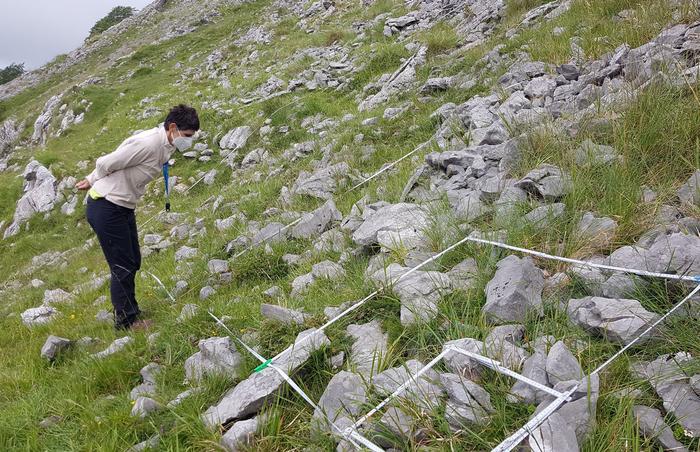In a groundbreaking international study published in Nature, scientists have unveiled the profound and previously underestimated impact of human activities on global plant biodiversity through an innovative analytical approach known as dark diversity. This research, conducted within the framework of the DarkDivNet network and involving nearly 5,500 locations across 119 diverse regions worldwide, provides compelling evidence that human-induced disturbances drastically reduce the potential natural vegetation in ecosystems, reshaping our understanding of biodiversity loss.
Traditional biodiversity assessments have predominantly focused on cataloging species present in a given habitat, often overlooking the “dark diversity” — the subset of species that are ecologically suited to a habitat but absent from it. By integrating this concept into their methodology, the research team has made it possible to assess not only the species richness observed in ecosystems but also the latent species diversity potentially supported by those environments. This allowed for a more nuanced and accurate evaluation of ecosystem impoverishment on a global scale.
The DarkDivNet network, initiated in 2018 by Professor Meelis Pärtel of the University of Tartu, brought together research groups from across the globe to apply a consistent methodology to a vast array of plant communities. Within this initiative, the Biodiversity and Evolution Research Group from the University of the Basque Country (UPV/EHU) played a crucial role by contributing extensive fieldwork from the Gorbeia Nature Reserve in Northern Spain. Their five-year endeavor involved sampling 55 distinct sites, specifically within beech forests and moor habitats, providing vital local data that enriched the global analysis.
Quantifying human impact in each sampled region was achieved through the Human Footprint Index, an integrative metric incorporating factors such as population density, land-use change, and infrastructure development like road networks. The study revealed a striking trend: in areas minimally affected by humans, natural habitats hosted approximately one-third of their potential plant species. Conversely, in regions subjected to intense human pressure, this fraction plummeted to one-fifth, underscoring the severity of human-induced ecological degradation.
These findings challenge the conventional understanding that biodiversity loss is predominantly confined to heavily urbanized or directly exploited areas. The research documented instances where even protected natural reserves exhibited substantial biodiversity impoverishment induced indirectly by human activities occurring at considerable distances. Mechanisms such as pollution influx, deforestation, overgrazing, and the proliferation of forest fires were indicated as primary drivers excluding native plant species and hindering their natural recolonization.
Beyond empirical observations, the study highlights the spatial influence of human impact, demonstrating that the Human Footprint Index affects plant diversity across radii extending several hundred kilometers from disturbance sources. This suggests that ecological damage from anthropogenic activities propagates through landscapes in complex ways, diminishing biodiversity not only where human presence is immediate but also in ostensibly pristine natural settings.
The integrative approach presented here sets a new standard for ecological monitoring by emphasizing the importance of dark diversity as a diagnostic tool for ecosystem health. This paradigm enables conservationists to identify the “missing” species that should exist based on habitat suitability, thereby offering a clearer picture of ecosystem degradation and resilience. Such insights are invaluable for guiding restoration efforts and prioritizing areas for conservation measures.
One of the more optimistic outcomes within the study’s findings is the mitigation potential observed when at least one-third of a region’s land area remains largely undisturbed. Maintaining such extensive natural reserves appears to buffer ecosystems against the most deleterious effects of human activities, lending empirical support to ambitious global conservation goals, such as the widely endorsed target to protect 30% of the Earth’s land surface by mid-century.
Moreover, the concept of dark diversity provides a critical metric to evaluate how restoration initiatives might progress, enabling scientists and land managers to track not only species present but also those likely to return if conditions are favorable. This offers a pathway to not just halt biodiversity loss but actively reverse it by fostering the return of species absent due to anthropogenic pressures.
The collaborative nature of this study, synthesizing data from multiple continents and diverse ecosystems, strengthens the reliability and universal applicability of its conclusions. The integration of field data, remote sensing, and ecological modeling heralds a new era in biodiversity science, where latent diversity is considered alongside observed patterns to more comprehensively understand environmental change.
This research also calls attention to the indirect and often overlooked consequences of human infrastructure development. Roads, urban spread, and agricultural expansion fragment habitats and create barriers that inhibit the natural migration and expansion of plant populations. These anthropogenic landscapes function as selective filters that truncate the ecological niches available, intensifying extinction risks and simplifying ecological communities.
As the world grapples with escalating ecological crises, including climate change and habitat destruction, this investigation underscores the urgency of reevaluating conservation priorities. The revelation that actual biodiversity might be far more impoverished than previously thought mandates innovative strategies that integrate dark diversity insights to preserve and restore ecosystem complexity.
In conclusion, this seminal study not only recalibrates our comprehension of human impact on biodiversity but also equips the scientific community with enhanced tools to monitor and mitigate these effects. It underscores a pivotal shift towards recognizing that protecting species richness requires knowledge not only of what is present but also of what is missing, thereby elevating the concept of dark diversity to a central role in global biodiversity conservation.
Subject of Research: Global plant biodiversity and the impact of human activities assessed through dark diversity analysis
Article Title: Global impoverishment of natural vegetation revealed by dark diversity
News Publication Date: 2-Apr-2025
Web References: http://dx.doi.org/10.1038/s41586-025-08814-5
References:
Pärtel, M., Tamme, R., Carmona, C. P., Riibak, K., Moora, M., Biurrun, I., Campos, J. A., & Zobel, M. (2025). Global impoverishment of natural vegetation revealed by dark diversity. Nature. DOI: 10.1038/s41586-025-08814-5
Image Credits: Credit: UPV/EHU
Keywords: Plant genetics, Plant evolution, Plant genomes, Plant gene expression, Extinction debt, Ecological crises, Evolutionary ecology, Ecological adaptation, Extinction




